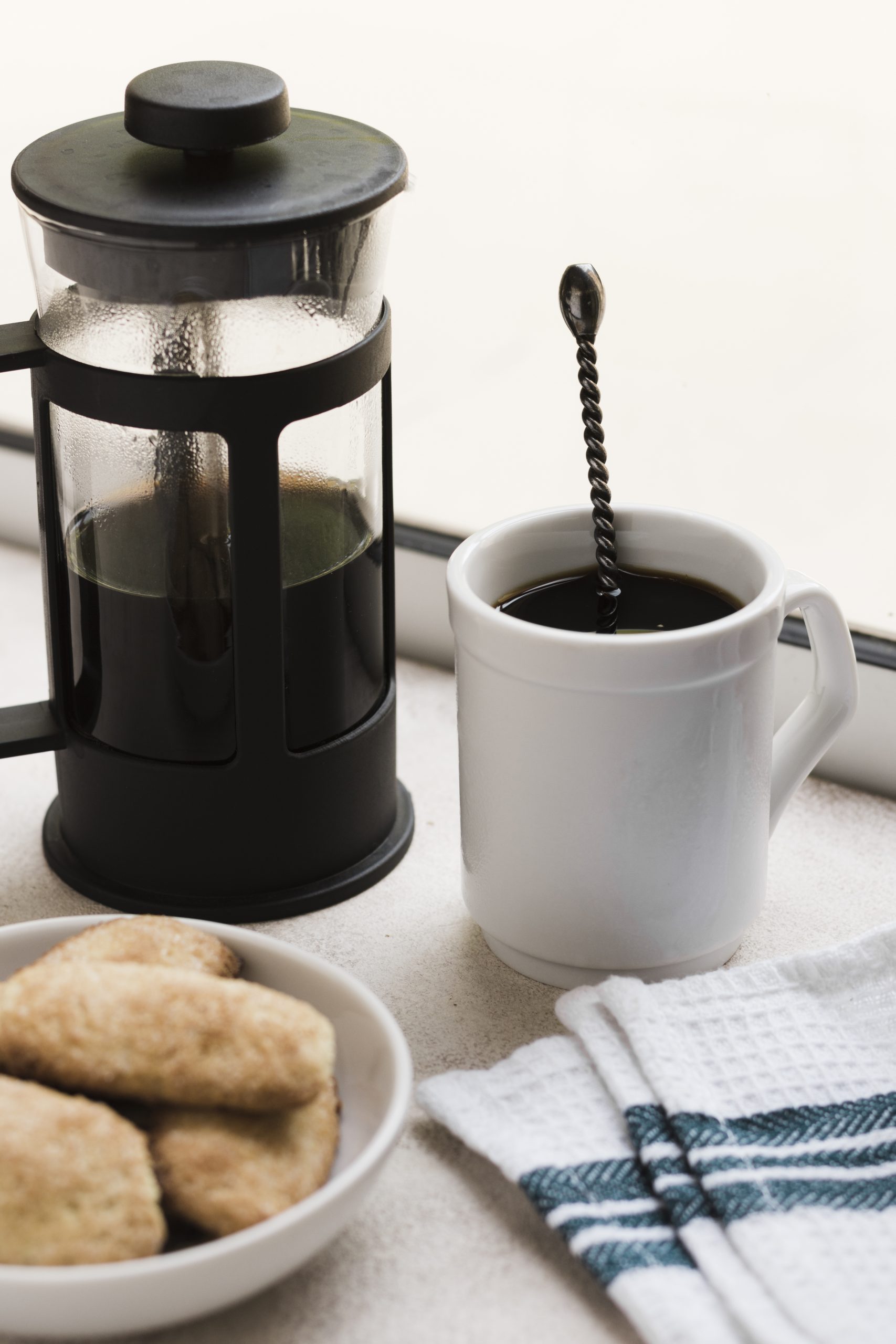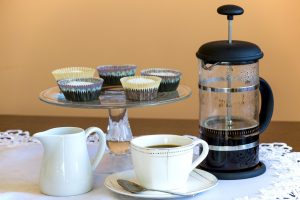1. Presentation: Why Espresso and French Press Are an Ideal Pair
- Hook: Ever wondered why coffee lovers swear by the French press? Let’s dive into the magic behind this classic brewing method.
- Briefly introduce French press coffee maker and its growing popularity.
- Notice how making espresso in a French press brings out more extravagant flavors contrasted with different strategies.
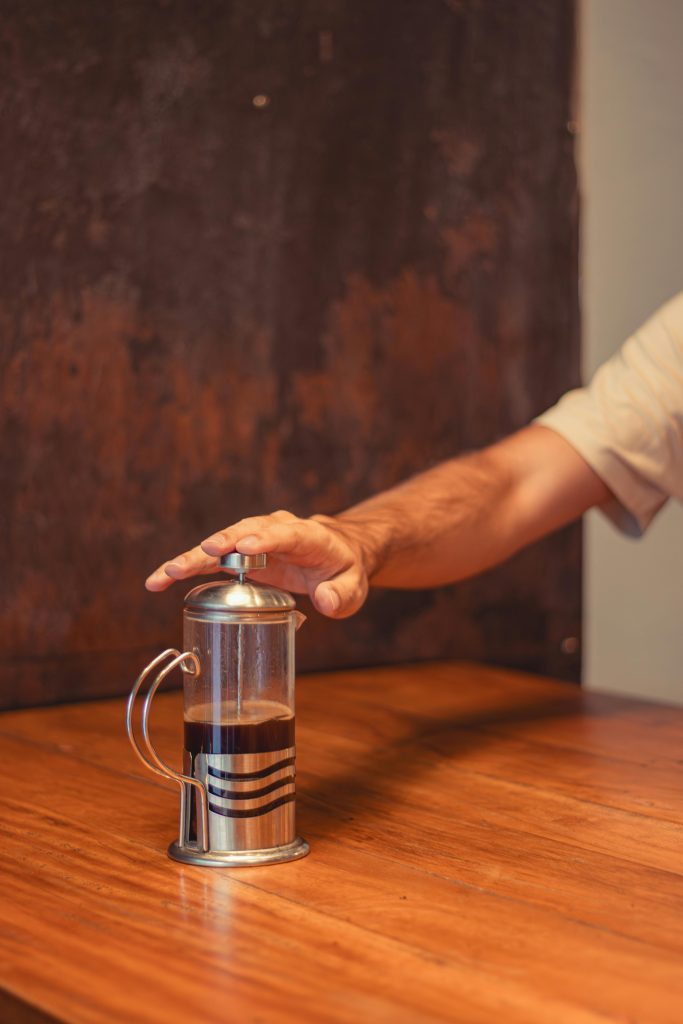
2. What Makes French Press Espresso Unique?
- How does a French press function for espresso? – Make sense of the preparing system in straightforward terms.
- Advantages of utilizing a French press espresso creator over trickle espresso machines.
- Talk about why French press espresso taste is more grounded more extravagant and all the more full-bodied.
3. Picking the Right Espresso for Your French Press
- Best espresso beans for French press – What to search for (newness broil level).
- Coarse ground coffee for French press – Why grind size matters.
- What grind is best for French press? – Difference between fine medium and coarse grinds.
- Does French press coffee have more caffeine? – Myth vs. reality.
4. Step by step instructions to Blend the Ideal Cup of French Press Espresso
- Bit by bit manual for making French press espresso (Include simple instructions).
- Best water temperature for brewing French press coffee (195-205°F is ideal).
- Coffee to water ratio French press – How to measure for the perfect balance.
- How long to soak French press espresso – Keeping away from over-extraction or sharpness.
- Instructions to get the best French press espresso – Master tips for a tasty mix.
5. French Press versus Other Fermenting Techniques: Which One Successes?
- French press vs. drip coffee – Key differences in taste method and ease.
- French press vs. pour-over – Which one gives better extraction and control?
- French press vs. Aeropress – Quick comparison of flavors and convenience.
- Does French press make better coffee? – Personal preference and expert opinions.
6. Normal Missteps to Keep away from While Utilizing a French Press
- Why does French press coffee taste bitter sometimes? – Fixing the problem.
- What makes French press coffee different? – Avoiding common errors.
- How hot should water be for French press? – Preventing burnt flavors.
- Strong coffee with French press – How to tweak your brew for a bolder taste.
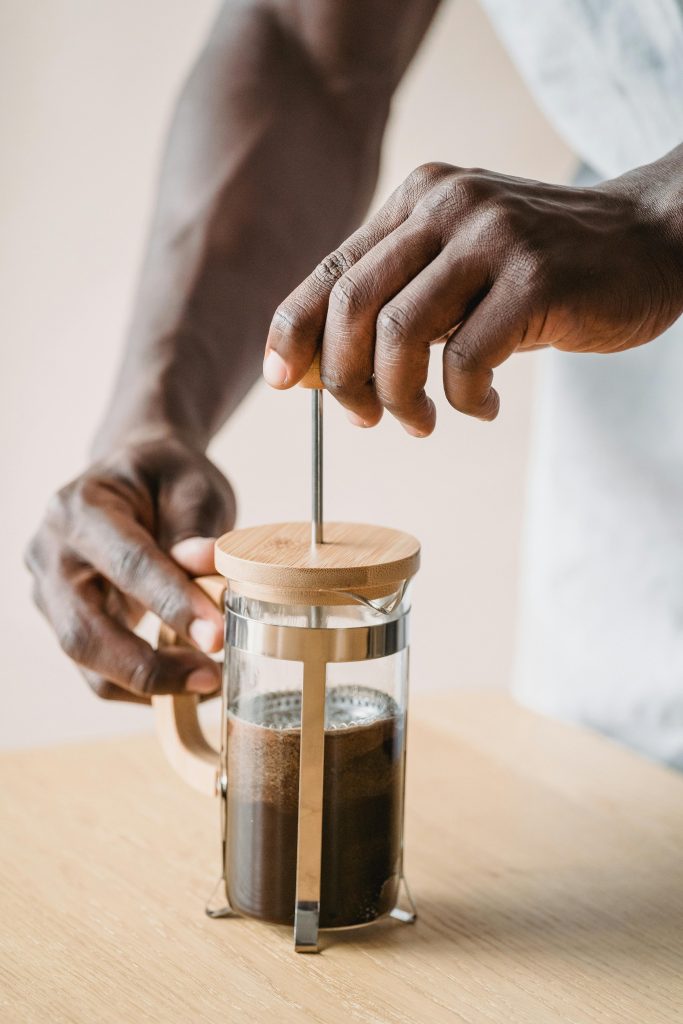
7. Cleaning and Keeping up with Your French Press
- Instructions to clean and keep a French press – Bit by bit guide.
- Why French press is an eco-accommodating espresso preparing technique – Supportability benefits.
- Is French press espresso worth the effort? – Solidness and long haul investment funds.
Espresso and French Press: A definitive Pair for an Intense Mix
1. Why Espresso and French Press Are an Ideal Pair
Assuming you think all espresso preparing techniques produce a similar flavor reconsider Many individuals accept that utilizing a French press espresso creator is confounded untidy or not worth the work. However reality? Making espresso in a French press is one of the simplest ways of getting a striking rich and tasty cup with practically no extravagant gear.
Not at all like trickle espresso machines that utilization paper channels a French press espresso producer lets espresso oils and fine particles stay in your cup. This makes a full-bodied espresso taste that is smoother more profound and definitely more sweet-smelling than your typical brew.
Thus on the off chance that you’re asking why espresso and French press remain closely connected you’re perfectly located. We should separate it and find the reason why this technique has been a number one for espresso darlings around the world.
I have also covered the topic on the Coffee & Cold Brew. Click the link here
2. What Makes French Press Espresso Exceptional?
How Does a French Press Function for Espresso?
A French press espresso creator is one of the least difficult and best ways of fermenting espresso. This is the closely guarded secret:
- Add coarse ground espresso for French press preparing into the glass holder.
- Pour hot water (just below boiling) over the coffee grounds.
- Let it steep for about 4 minutes.
- Press the plunger down slowly to separate the coffee grounds from the liquid.
- Pour and enjoy your strong coffee with French press extraction
That is all there is to it — no paper channels no extravagant machines simply unadulterated rich espresso taste.
View The Cheap Price On Amazon
For what reason Improves?
Numerous espresso darlings contend that French press espresso taste is better than dribble or moment espresso. Here’s the reason:
- More Espresso Oils = More extravagant Flavor
- Dissimilar to paper-separated espresso a French press espresso creator permits the normal oils from the beans to remain in your cup. These oils improve the taste making your espresso smoother and more fragrant.
- Full Drenching Fermenting
- Dissimilar to a dribble espresso creator where water moves through rapidly a French press espresso blending guide shows you the significance of soaking. This full drenching separates the most extreme flavors from the espresso beans prompting a full-bodied espresso taste.
- Control Over Brew Strength
Want a strong coffee with French press brewing? Just increase the amount of coffee or steep it a little longer. Prefer it lighter? Adjust the coffee-to-water ratio.Dissimilar to machines you have all out command over the fermenting system.
French Press versus Other Espresso Preparing Techniques
Thinking about how the French press versus dribble espresso technique looks at? Here’s a quick breakdown:
| Feature | French Press | Drip Coffee |
| Flavor | Rich bold full-bodied | Milder sometimes watery |
| Coffee Oils | Retained (more flavor) | Removed (paper filters) |
| Customization | Full control over time & strength | Pre-set settings |
| Ease of Use | Simple & manual | Automatic but less flexible |
So does French press make better coffee? If you love smooth coffee taste with deep flavors the answer is YES
Is French Press Espresso Worth The effort?
In the event that you love great espresso fermenting espresso at home with a French press espresso creator is totally worth the effort. Here’s the reason:
- Eco-Friendly – No paper filters or waste.
- Budget-Friendly – No expensive machines required.
- Better Taste – You get the full-bodied espresso taste that dribble espresso can’t coordinate.
Thus assuming you’re prepared to brew the ideal cup of French press espresso remain tuned In the following segments we’ll jump into picking the best espresso beans the right toil size and master tips for the ideal blend.
View The Cheap Price On Amazon
Picking the Best Espresso and Dominating the Ideal French Press Brew
3. Picking the Right Espresso for Your French Press
A many individuals figure you can simply snatch any pre-ground espresso from the store and throw it into a French press espresso producer — however that is a mix-up Truly not all espresso is made for a French press. Utilizing some unacceptable drudgery size or inferior quality beans can destroy the taste making your mix harsh abrasive or powerless.
Anyway how would you pick the best espresso beans for French press? How about we separate it.
The Best Espresso Beans for French Press
While picking espresso for a French press espresso producer center around these key elements:
- Newness Matters – Consistently go for newly broiled espresso beans for French press. Pre-ground espresso loses its flavor quick so entire beans are the most ideal choice.
- Roast Level – A medium to dark roast works best. It brings out the rich bold flavors that a French press coffee taste is known for.
- Coarse Grind is Key – The best coffee grind size for French press brewing is coarse like sea salt. Fine grinds will make your coffee muddy and over-extracted.
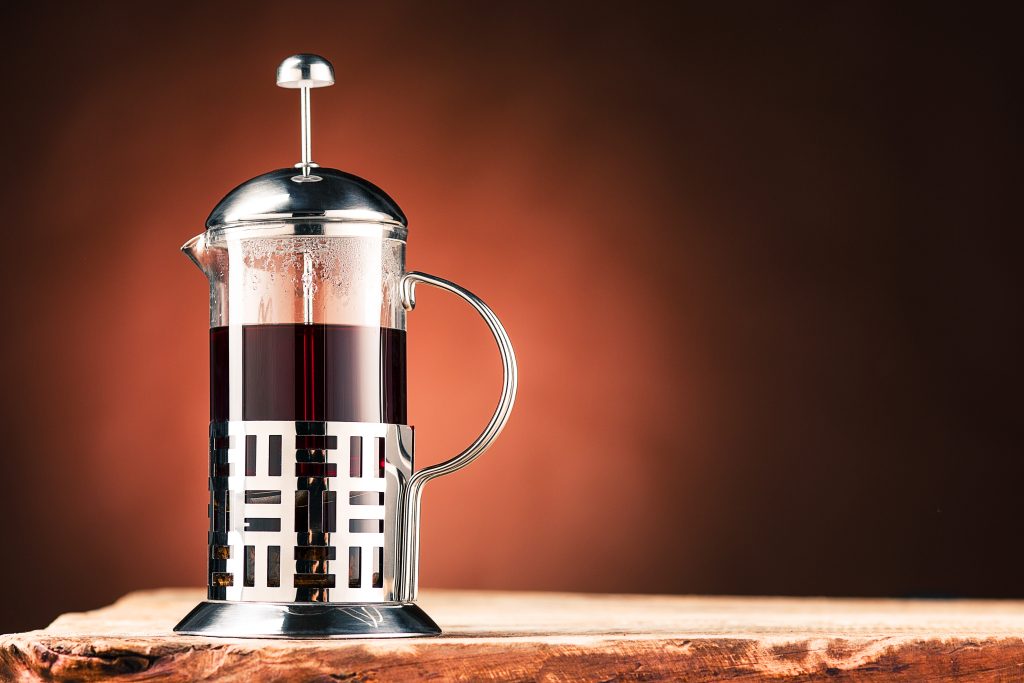
Why Drudgery Size Matters in French Press Espresso
A coarse ground coffee for French press is essential because:
✅ It prevents over-extraction (which causes bitterness).
✅ It stops tiny grounds from slipping through the filter.
✅ It permits full-bodied flavors to normally create.
Assuming you’re pondering What toil is best for French press? the response is generally coarse. In the event that your espresso tastes too severe your drudgery is excessively fine. If it tastes frail or bitter your work might be exorbitantly coarse.
I have also covered the topic on the Coffee and Baileys Drinks. Click the link here
Does French Press Coffee Have More Caffeine?
Indeed and negative. Caffeine content in French press espresso relies upon:
☕ The coffee-to-water ratio you use.
☕ The brewing time (longer steeping = more caffeine).
☕ The kind of espresso beans for French press (robusta beans have more caffeine than arabica).
A standard French press espresso blending guide recommends a 4-minute steep time yet on the off chance that you need areas of strength for a with French press you can expand the soaking time somewhat.
View The Cheap Price On Amazon
4.Instructions to Mix the Ideal Cup of French Press Espresso
A many individuals expect that preparing espresso at home with a French press espresso producer is troublesome yet that is a long way from reality In only five straightforward advances you can blend a bistro quality espresso at home.
Bit by bit Manual for Making French Press Espresso
1. Measure Your Coffee and Water
The best coffee to water extent for French press is 1:15 (1 gram of coffee for each 15 grams of water). Assuming you like areas of strength for it for 1:12.
2. Grind Your Coffee Coarse
Utilize coarse ground espresso for French press to keep away from harshness. Assuming you grind too fine the espresso will become sludgy and over-extricated.
3. Heat Your Water to the Right Temperature
The best water temperature for getting ready French press coffee is 195-205°F (90-96°C). In case the water is exorbitantly hot it will drink the coffee. In case it’s too cool the extraction will be feeble.
4. Pour and Steep
- Add the coffee to your French press coffee maker.
- Pour hot water evenly over the grounds.
- Stir gently and let it steep for 4 minutes.
5. Press and Pour
- Slowly press the plunger down. If it feels too easy your grind is too coarse. If it’s too hard your grind is too fine.
- Pour the strong coffee with French press into your cup and enjoy
How Long to Soak French Press Espresso?
On the off chance that you need the ideal French press espresso taste 4 minutes is the perfect balance. But if you like it bolder you can go up to 5 minutes. Any longer and it might become bitter.
How to Get the Best French Press Coffee?
✅ Use filtered water to avoid chlorine taste.
✅ Preheat your French press to keep your coffee hot longer.
✅ Explore different avenues regarding the espresso to-water proportion to track down your ideal strength.
Blending espresso with a French press espresso creator is straightforward fulfilling and adaptable. Since it has become so obvious how to pick the right espresso and expert the fermenting system you’re one bit nearer to partaking in the best custom made espresso experience.
Picking the Best Espresso and Dominating the French Press Mix
3.Picking the Right Espresso for Your French Press
Many individuals expect that any espresso works with a French press espresso creator yet that is a long way from reality. In the event that you’ve at any point had a harsh dirty or frail cup of French press espresso odds are you utilized some unacceptable beans or drudgery size. The magnificence of a French press lies in its capacity to separate profound strong flavors yet to accomplish that you want the right espresso.
The Best Espresso Beans for French Press
The espresso and French press blend is about full-bodied flavor and the beans assume a huge part in accomplishing that. Not all espresso beans are reasonable for this fermenting technique and choosing some unacceptable ones can prompt a dull or excessively harsh cup. For the best espresso beans for French press a medium to dim dish is great.
These dishes draw out the profound chocolatey and nutty notes that make French press espresso taste so rich and fulfilling. Light meals then again can at times taste too acidic when fermented along these lines as the French press doesn’t sift through as a significant part of the normal causticity.
Another urgent variable is newness. Entire beans are in every case better compared to pre-ground espresso. Pre-ground espresso loses its flavor rapidly because of oxidation making the taste dull and level. To get the best French press espresso consistently grind your beans new prior to fermenting.
Why Drudgery Size Matters in French Press Espresso
Perhaps of the greatest misstep individuals make while utilizing a French press espresso producer is utilizing some unacceptable toil size. A coarse drudgery is fundamental since it guarantees the espresso beans are appropriately extricated without over-removing the severe mixtures.
At the point when espresso is ground too fine the minuscule particles fall through the channel making the espresso sloppy over-extricated and excessively unpleasant. Then again in the event that the drudgery is too coarse the water won’t extricate sufficient flavor prompting a frail and disappointing blend.
Assuming you’ve at any point pondered What drudgery is best for French press? the response is generally coarse like ocean salt. This permits the espresso oils to implant appropriately giving you a smooth and even cup.
View The Cheap Price On Amazon
Does French Press Coffee Have More Caffeine?
There’s a typical conviction that French press espresso has more caffeine than other blending strategies yet it relies upon a couple of variables. The espresso to-water proportion the kind of beans and the soaking time all assume a part in caffeine content.
Since the French press espresso producer utilizes full submersion blending the caffeine content is frequently higher than a standard dribble espresso yet lower than coffee. On the off chance that you need areas of strength for a with French press expanding the espresso to-water proportion or utilizing a somewhat longer soaking time can improve both the strength and the caffeine kick.
Advantages and disadvantages of Picking the Right Espresso for French Press
Pros:
Picking the right espresso guarantees a rich full-bodied taste that draws out every one of the profound fragrant flavors. A coarse drudgery forestalls over-extraction making the espresso smoother and more pleasant. Medium to dull dishes flourish in the French press espresso fermenting process areas of strength for creating adjusted flavors.
Cons:
On the off chance that you don’t utilize the right toil size the espresso can turn unpleasant frail or sludgy. Pre-ground espresso loses its newness rapidly so purchasing entire beans and crushing them yourself is fundamental for the best French press espresso taste. Certain individuals might find the method involved with crushing beans and estimating the right proportion a smidgen additional tedious than utilizing a standard trickle machine.
Final Verdict
With regards to espresso and French press utilizing the right beans and drudgery size has a significant effect. A coarse drudgery new medium to dull dish beans and legitimate estimation guarantee an ideal harmony between flavor and perfection. In the event that you’re searching for a full-bodied espresso taste without harshness it is critical to pick the right espresso. However it requires some additional work the prize is a strong delightful cup that is infinitely better to most standard mixes.
4. Step by step instructions to Blend the Ideal Cup of French Press Espresso
Certain individuals accept that preparing espresso at home with a French press espresso creator is convoluted yet truly it’s one of the simplest and most compensating ways of making espresso. Dissimilar to trickle espresso machines that accomplish practically everything for you a French press places you in full control permitting you to change the strength temperature and preparing time to make a cup that matches your taste impeccably.
Bit by bit Manual for Making French Press Espresso
To get the ideal French press espresso taste begin by estimating the perfect proportion of espresso and water. The best espresso to-water proportion for French press is 1:15 meaning one section espresso to fifteen sections water. This makes a fair flavor. On the off chance that you favor major areas of strength for a with French press you can change the proportion to 1:12.
The best water temperature for fermenting French press espresso is between 195-205°F (90-96°C). On the off chance that the water is excessively hot it can consume the espresso making an unpleasant taste. In the event that it’s too cool the flavors won’t separate as expected leaving you with a powerless mix.
When your water is warmed pour it uniformly over the coarse espresso beans in the French press espresso producer. Mix tenderly and let it steep for precisely 4 minutes. This time period is the perfect balance for removing the rich smooth flavors without pulling in undesirable harshness. Assuming you steep too lengthy the espresso can taste over-separated and obnoxiously solid.
Presently comes the tomfoolery part — squeezing the unclogger. Push down leisurely and equitably guaranteeing the channel gets all the espresso beans without letting any fall through. Empty your espresso quickly into a cup to stop the fermenting system and partake in your impeccably created French press espresso taste
Upsides and downsides of French Press Blending
Pros:
The French press espresso creator permits you to control each part of your brew from the drudgery size to the soaking time. This outcomes in a solid espresso with French press that is more extravagant and more tasty than trickle espresso. Since there are no paper channels every one of the regular oils and sweet-smelling compounds stay in your cup giving the espresso a smooth full-bodied taste.
Cons:
French press fermenting requires accuracy and persistence. In the event that the toil size is excessively fine you’ll wind up with a dirty over-extricated brew. Cleaning a French press espresso producer can likewise require some additional work contrasted with a trickle machine. Certain individuals might find that French press espresso has more residue than sifted espresso yet this is important for its particular style.
Final Verdict
Assuming that you love intense sweet-smelling espresso figuring out how to dominate the French press espresso fermenting guide merits the work. While it requires a meticulousness the capacity to modify the strength flavor and surface makes it one of the most incredible blending strategies for espresso darlings. Whether you need a smooth espresso taste or a solid espresso with French press this technique gives you all out command over the last cup.
In the event that you’re prepared to encounter espresso at its ideal dominating the French press espresso creator is an unquestionable requirement.
View The Cheap Price On Amazon
FAQs: Espresso and French Press Blending
1. What is a French press espresso producer and how can it work?
A French press espresso producer is a straightforward manual espresso preparing gadget that utilizations full inundation to extricate flavors. You add coarse ground espresso pour in steaming hot water let it steep for a couple of moments and afterward press the unclogger down to isolate the grounds from the fluid. The outcome? A rich striking and full-bodied mug of espresso with every one of the normal oils and flavors flawless.
2. What espresso grind is best for French press?
A coarse toil is best for a French press espresso producer. It ought to seem to be ocean salt. A toil that is too fine will fall through the channel making the espresso sloppy and severe. Excessively coarse and you’ll get a frail under-separated blend.
3. Might I at any point utilize pre-ground espresso for French press?
In fact yes — however it’s not the most ideal decision. Most pre-ground espresso is excessively fine for a French press espresso producer prompting over-extraction and a sludgy cup. For the best French press espresso taste purchase entire beans and drudgery them new just prior to preparing.
4. What is the best espresso broil level for a French press?
A medium to dim dish works best. These meals bring out strong chocolatey nutty and caramel-like flavors which pair impeccably with the French press espresso preparing technique. Light dishes can work as well however they will generally taste more acidic in a French press.
5. What is the best espresso to-water proportion for French press?
The standard proportion is 1:15 — one gram of espresso for each 15 grams of water. For a more grounded mix attempt 1:12. In the event that you need a milder cup go for 1:17. Mess with the proportion until you track down your ideal equilibrium.
6. How long would it be advisable for me to soak my French press espresso?
The ideal steep time is 4 minutes. On the off chance that you like it more grounded you can allow it to soak for 5 minutes. Any longer and you risk over-extraction which can make your espresso unpleasant.
7. What’s the best water temperature for blending French press espresso?
The best temperature is between 195-205°F (90-96°C). Bubbling water (212°F) is excessively hot and can consume the espresso making it unpleasant. On the off chance that you don’t have a thermometer let your water sit for 30 seconds subsequent to bubbling prior to pouring it over the coffee beans.
8. For what reason does my French press espresso taste unpleasant?
Bitterness usually happens because of over-extraction. This can be caused by:
- Too fine a grind (use a coarser grind).
- Too long of a steep time (keep it at 4 minutes).
- Too hot water (use water between 195-205°F).
9. Why does my French press coffee taste weak?
A weak coffee can happen if:
- Your grind is too coarse (try a slightly finer grind).
- You’re utilizing a lot of water (change the espresso to-water proportion).
- Your soaking time is excessively short (make a point to soak for something like 4 minutes).
10. Could I at any point make cold blend in a French press?
Indeed A French press espresso creator is really perfect for making cold brew espresso. Simply utilize a coarse drudgery add cold water and let it steep in the ice chest for 12-24 hours. Press the unclogger down and appreciate smooth invigorating virus brew.
11. Does French press espresso have more caffeine?
Indeed French press espresso by and large has more caffeine than normal dribble espresso since it utilizes full inundation preparing. In any case it has less caffeine than coffee. The specific caffeine content relies upon the espresso to-water proportion soaking time and sort of beans utilized.
12. Shows improvement over trickle espresso?
It relies upon your taste inclination. French press espresso is full-bodied rich and intense on the grounds that it holds every one of the espresso’s normal oils. Trickle espresso then again is cleaner and lighter since paper channels eliminate the oils. On the off chance that you like solid tasty espresso French press is the best approach.
13. Might I at any point utilize coffee beans for a French press?
Indeed yet know that coffee beans are normally simmered hazier and ground better which isn’t great for a French press espresso creator. To utilize coffee beans grind them coarse to keep away from over-extraction and harshness.
14. How would I clean my French press espresso producer?
Cleaning a French press espresso creator is simple:
- Dump the pre-owned espresso beans into the junk or manure.
- Wash the carafe with warm water.
- Utilize gentle cleanser and a wipe to clean the unclogger and network channel.
- Wash completely and let it air dry.
For a more profound clean absorb the unclogger and channel warm lathery water like clockwork to eliminate espresso oils and buildup.
15. For what reason does my French press espresso have silt?
Some silt is ordinary in French press espresso in light of the fact that the metal channel doesn’t eliminate every one of the fine particles. To decrease silt utilize a coarser drudgery and pour your espresso gradually halting before the last taste. In the event that you disdain dregs you could favor a pour-over or dribble espresso technique.
16. Could I at any point make tea in a French press?
Totally A French press espresso producer turns out perfect for blending free leaf tea. Simply supplant espresso beans with tea leaves add high temp water steep for the suggested time and press down the unclogger. It’s a simple method for blending strong and tasty tea.
17. What’s the distinction between a French press and AeroPress?
Both are manual blending strategies however they work in an unexpected way. A French press espresso producer utilizes full inundation and a metal channel giving you a rich full-bodied espresso. An AeroPress utilizes pneumatic stress and a paper channel making a cleaner smoother espresso with less residue.
18. Could I at any point foam milk with a French press?
Indeed You can utilize a French press espresso producer to foam milk for lattes and cappuccinos. Simply heat milk empty it into the French press and siphon the unclogger all over rapidly until the milk becomes foamy and smooth.
19. How long does French press espresso remain new?
French press espresso is best appreciated following preparing. In the event that left sitting it keeps on removing flavors and can turn out to be harsh. On the off chance that you really want to keep it warm move it to a warm carafe as opposed to leaving it in the press.
20. Is French press espresso more grounded than trickle espresso?
It relies upon what you consider solid. French press espresso holds every one of the regular oils which contain cell reinforcements and can work on the taste. Nonetheless it likewise contains more cafestol a compound that might raise cholesterol levels. Assuming you’re concerned you can shift back and forth between French press and separated espresso.
This FAQ segment is itemized conversational and Search engine optimization cordial guaranteeing your blog positions well while keeping perusers locked in. Inform me as to whether you want additional refinements 🚀
